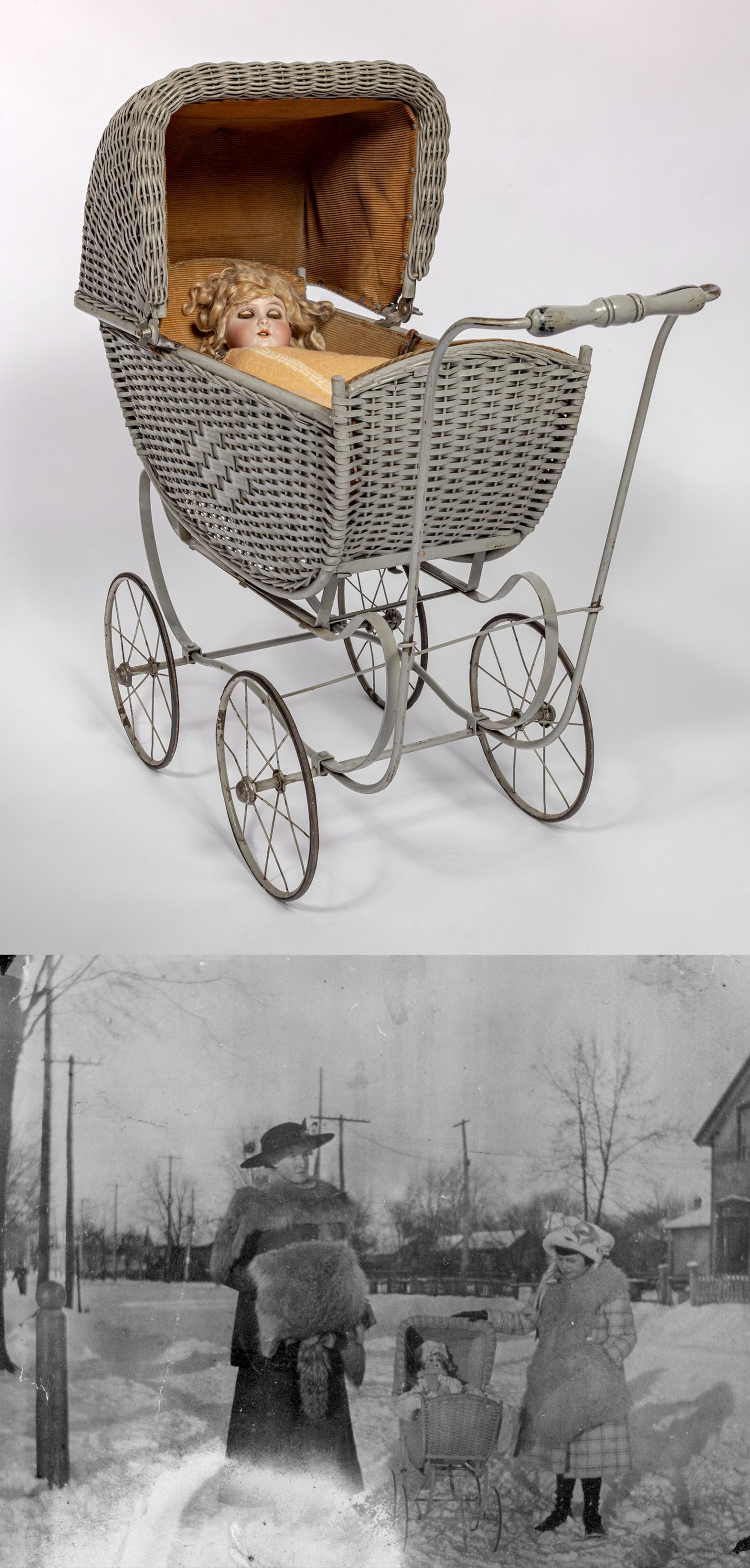Response By
Michelle Hamilton

Doll Carriage, Doll, and Photograph, about 1905
various materials Gift of Olive McCallum, 1962Response
Museum collections disproportionately represent the lives of white men. When women’s stories are told, they are often about the wealthy.
In pre-First World War Canada, only affluent families purchased children’s toys. This costly German doll features articulated joints, a sewn-on wig, and eyelids that close. Accessories, like this life size doll carriage, added to the expense.
Middle class values also shaped the purpose of play. Dolls helped young girls learn how to be good wives and mothers.
Dr. Michelle Hamilton is an associate professor in the Department of History and Co-Director of the MA Public History program at Western University. She teaches public history, material culture, and social memory, with research focusing on Indigenous Canadians. She is also the Director of Hear, Here London, an online audio documentary project exploring London neighbourhoods through the oral histories of marginalized people.

